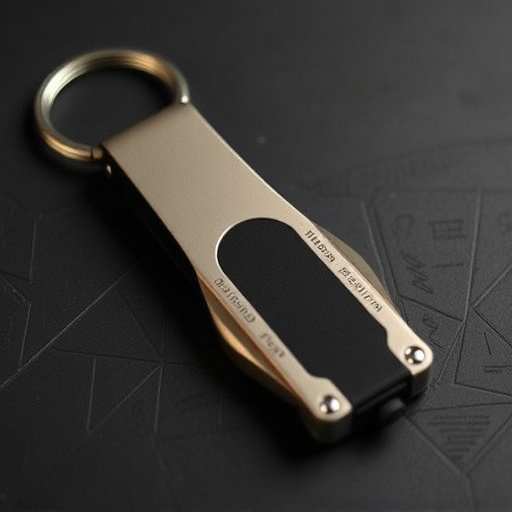Before considering a defensive keychain, understand your state's laws on concealed weapon carry and practice the Proper Keychain Striking Form Technique for safe, effective self-defense. A suitable keychain balances compact size and powerful striking form, enabling comfortable everyday use while adhering to legal limits. Regular training enhances muscle memory, ensuring quick, assured responses in dangerous situations.
In today’s world, knowing how to defend yourself legally is more important than ever. This guide explores the defensive keychain legal carry guidelines for states across the nation. Understanding state laws on legal carry is crucial for ensuring compliance and peace of mind. We’ll delve into key considerations like keychain size, weight, proper grip, striking distance, target acquisition, and confidence through consistent practice, emphasizing the art of proper keychain striking form technique.
- Understanding State Laws on Legal Carry
- Keychain Size and Weight Considerations
- Proper Hand Grip and Stance Technique
- Striking Distance and Target Acquisition
- Building Confidence with Consistent Practice
Understanding State Laws on Legal Carry
Knowing and understanding your state’s laws regarding legal carry is paramount when considering defensive keychain use. Each state has its own set of regulations dictating who can carry a concealed weapon, what types of weapons are permitted, and where they can be carried. For instance, some states allow any licensed individual to carry a firearm for self-defense, while others have strict requirements like a permit or specific training certifications.
The “proper keychain striking technique” is also a crucial aspect often overlooked. This refers to the correct and safe manner of deploying and using your defensive keychain. It involves understanding the proper form and force required to effectively deter an attacker without causing unnecessary harm, especially in close-quarters situations. Learning and mastering this striking technique ensures that you can use your keychain as intended while adhering to legal boundaries.
Keychain Size and Weight Considerations
When considering a defensive keychain for legal carry, one essential aspect is the size and weight of the device. A proper keychain should be compact, allowing it to fit comfortably on a keyring without adding significant bulk to your keys. This ensures it remains discreet during everyday use, adhering to legal carry guidelines.
The striking form technique is also crucial. It should be designed for ease of use, enabling you to employ a secure and efficient defense mechanism with minimal effort. A well-balanced weight distribution across the keychain guarantees a firm grip and precise control when activated, ensuring your safety without causing discomfort or injury to yourself or others.
Proper Hand Grip and Stance Technique
To ensure maximum effectiveness and safety while carrying a defensive keychain, mastering proper grip and stance is crucial. The key is to adopt a stable, balanced position that allows for quick reaction time and precise control. Hold the keychain with a firm yet relaxed grip, positioning your hand at the midpoint of the device’s handle. This provides optimal leverage without causing strain.
Your stance should be slightly wider than shoulder-width apart, with knees bent and weight evenly distributed. This “ready” position enables you to swiftly shift your balance and generate powerful strikes using the keychain’s built-self-defense capabilities. Practice this proper keychain striking form regularly to develop muscle memory, ensuring you can react instinctively in a high-pressure situation.
Striking Distance and Target Acquisition
In the context of defensive keychain usage, understanding striking distance and target acquisition is paramount for effective self-defense. The proper keychain striking form technique involves a swift, precise movement to incapacitate an assailant from a safe distance. This distance allows the user to quickly deploy their keychain without putting themselves at undue risk. It’s crucial to practice and develop muscle memory for accurate target acquisition, ensuring the keychain makes contact with vulnerable areas like pressure points or vital organs.
Mastering this skill requires dedicated training to achieve both speed and accuracy. By focusing on striking form, individuals can enhance their ability to defend themselves in a variety of scenarios, making their keychain a reliable tool for personal safety. This practice should include drills that simulate real-life attacks, enabling users to react instinctively and effectively when facing dangerous situations.
Building Confidence with Consistent Practice
Building confidence in your ability to defend yourself starts with consistent practice of proper keychain striking form technique. Regularly rehearsing the motions and muscle memory required for effective self-defense increases your comfort and assurance in potentially dangerous situations. Through dedicated training, you can develop a reliable intuition that allows you to respond quickly and confidently when faced with an attack.
Mastering the correct technique for using a keychain as a defense tool is crucial. This involves learning not just how to swing or strike but also understanding the principles of leverage, timing, and angle. Consistent practice allows you to refine these skills, ensuring that your movements are fluid, precise, and ultimately effective in deterring an assailant.
In conclusion, mastering defensive keychain carrying involves a combination of understanding state laws, making practical considerations about size and weight, adopting proper hand grip and stance techniques, refining striking distance and target acquisition skills, and building confidence through consistent practice. By adhering to these guidelines, you’ll be well-equipped to handle potential situations with enhanced safety and assurance, ensuring your key chain serves as a reliable tool for personal defense.
